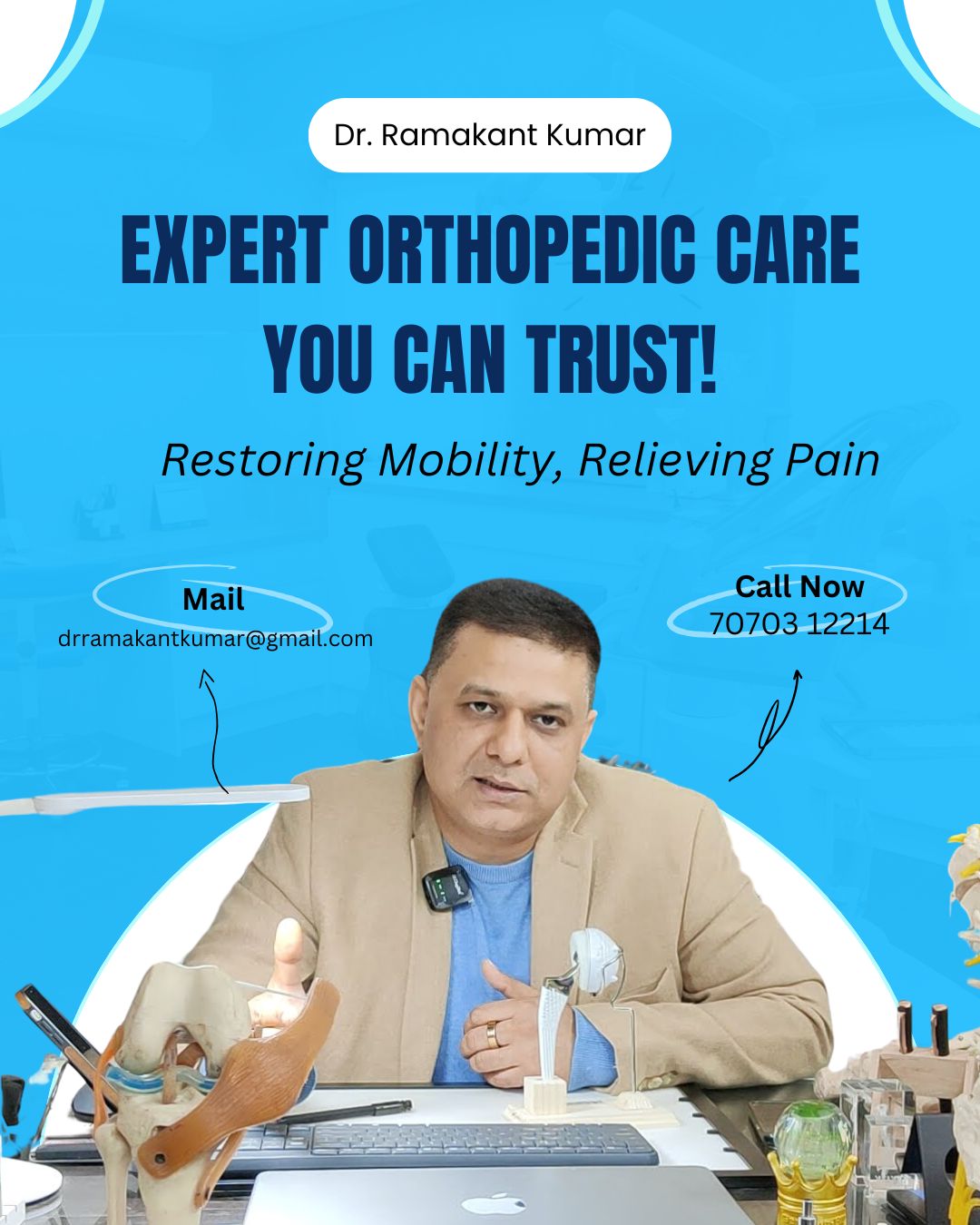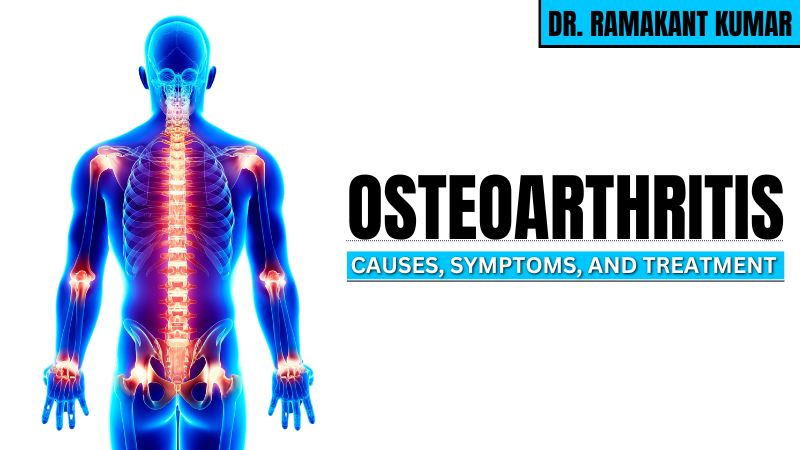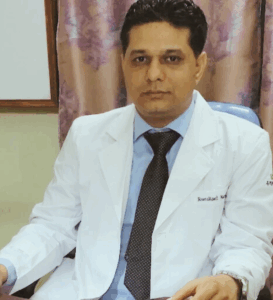Osteoarthritis (OA) is a common joint disease affecting many people worldwide, especially old ones and women.
According to studies and stats, OA is one of the most common rheumatologic problems and occupies 22% to 39% of bone diseases in India.
It can be very painful and may cause inflammation and swelling in the joints (fingers, knees, hips, shoulder, and others).
OA often occurs due to the destruction of the cartilage that separates the joints and provides frictionless movement.
Moreover, when the cartilage is damaged, bones start rubbing each other, which causes severe pain, inflammation, and swelling.
So, if you’re the one suffering from OA, you must consult the best Orthopedic Doctor in Patna for proper diagnosis and treatment.
But before consulting a doctor, understand the causes, symptoms, and treatment options of OA from the following sections.
That saying, let’s start with the causes!
Contents
Causes of Osteoarthritis
The primary cause of OA is when the cartilage that is present in the ends of joints gradually deteriorates (becomes worse).
Cartilage is a firm, rubbery, flexible connective tissue that enables nearly frictionless joint motion.
In other words, it works to prevent the direct contact of bones in the joints to avoid any bone damage.
However, there are some other factors that can increase the risk of osteoarthritis, including:
- Obesity: The risk of OA is higher in overweight people as extra weight can apply extra pressure on joints.
- Age: People older than 50 years are at higher risk. OA commonly occurs in old age people.
- Gender: Women are more likely to develop OA. It needs some more evidence to prove this theory right.
- Injuries: It may happen due to an accident or fall and can cause OA.
Thus, these are some of the most common causes of OA and some factors that may increase the risk of developing of cause.
Also read: Where Does Osteoarthritis Commonly Occur?
Symptoms of Osteoarthritis
Osteoarthritis symptoms usually develop slowly and worsen over time.
The worst part about this is that you can’t predict the symptoms in the early stage. It’ll notice it when it gets worse.
So, if you feel any of the symptoms, anytime, the first thing you should do is consult a doctor.
Below are the signs and symptoms of OA that you may notice, including:
Pain or aching in a joint: You feel severe and chronic pain in the affected joints while doing activities such as walking. You may also feel pain while resting after a long day of activity.
- Joint stiffness: It is a common osteoarthritis symptom in which you feel difficulty in joint movement, especially when you wake up in the morning or get after a long rest.
- Hear popping or crackling: It is also called grating sensation or crepitus. You may feel it when you use your joints for movement, especially while bending.
- Lower flexibility: Also called the lower range of motion, it means you can’t move your joints as before (at a younger age), i.e., with a full range of motion.
- Instability: You’ll feel difficulty while standing or walking, i.e., you’ll feel unstable/difficulty while performing regular tasks.
- Swelling: It’s very common with any type of bone disease. It is usually caused by soft tissue inflammation. You’ll notice swelling around the affected joint.
- Thus, these are some common osteoarthritis symptoms that you may notice. Never ignore them, as they’ll become severe and worse over time.
Treatment of Osteoarthritis
If you notice any of the above symptoms, you must consult an orthopedic doctor in the first place.
Below are some treatment options that your doctor may advise you to consider, including:
#1. Exercise
Exercise is great for improving the overall health condition of the body, especially bones.
It may sound unbelievable that exercises can reduce the symptoms or even risk of OA, but professionals agree with this.
Many doctors suggest considering some range-of-motion and low-impact exercises for people with OA.
It will increase bone strength, improve flexibility, and provide a better range of motion.
#2. Therapy
Therapy is one of the best options to treat bone problems, especially osteoarthritis.
A professional therapist can help you increase the strength of muscles around the joint, flexibility of joints, and reduce pain.
Furthermore, they can also guide you to perform regular tasks by applying extra pressure on the affected bones that prevent further injury.
Research shows that therapy can reduce the destruction of cartilage and slow down the development of OA.
So, consult a professional therapist today and build a personalized therapy session to overcome OA.
#3. Medication
Medication is not a permanent solution for osteoarthritis. It can benefit a particular period.
Doctors suggest some non-steroidal anti-inflammatory drugs (NSAIDs) to reduce the pain of OA.
NSAIDs basically work as painkillers and also help to reduce inflammation in the affected joint.
Some NSAIDs that most doctors suggest to people with OA are Ibuprofen (Advil, Motrin), Naproxen (Aleve, Anaprox DS, Naprosyn), Celecoxib (Celebrex), and more.
Note: Doctors don’t suggest taking these painkillers regularly as they may harm the organs of the body.
So, if you don’t feel relieved from these medications, you should consider surgery for osteoarthritis.
#4. Surgery
There are two main surgical treatments for OA, including:
Conservative treatments: The damaged cartilage is left in place while treating OA with this method.
Radical treatments: The damaged cartilage is replaced by artificial implants.
In these two surgeries, radical treatment is very common and successful. It is also known as joint arthroplasty.
Some of the common joint arthroplasty that your doctor can advise are knee replacement surgery, hip replacement surgery, and more.
However, before considering any surgical treatment, the best Orthopedic Surgery Specialist Patna diagnoses the condition.
Hence, this is everything you need to know about osteoarthritis, i.e., from causes to treatment.
Conclusion
Osteoarthritis (OA) is a severe bone condition that occurs in different joints of the body.
It develops and shows its symptoms slowly, so nobody can predict the situation until it becomes worse.
Therefore, if you notice any of the symptoms (mentioned above), consult a doctor to avoid further damage.
And if the condition is mild to moderate, you can consider the treatment options (except surgery).
Hope you find it helpful and informative! If you want to know anything else about OA, you can ask in the comments.




